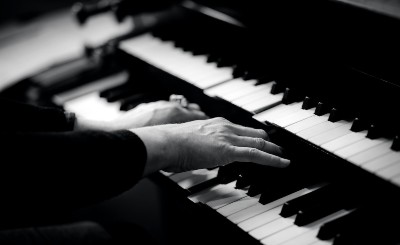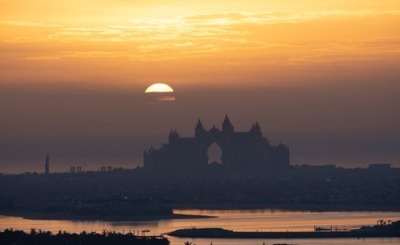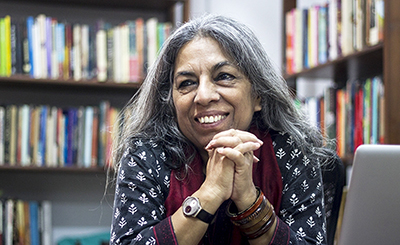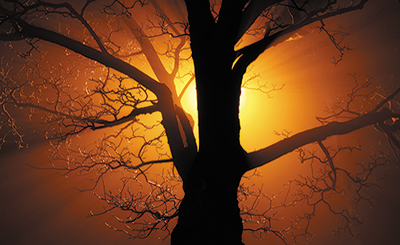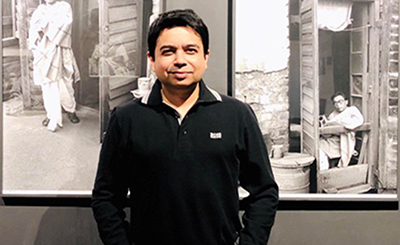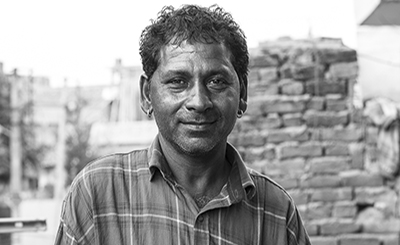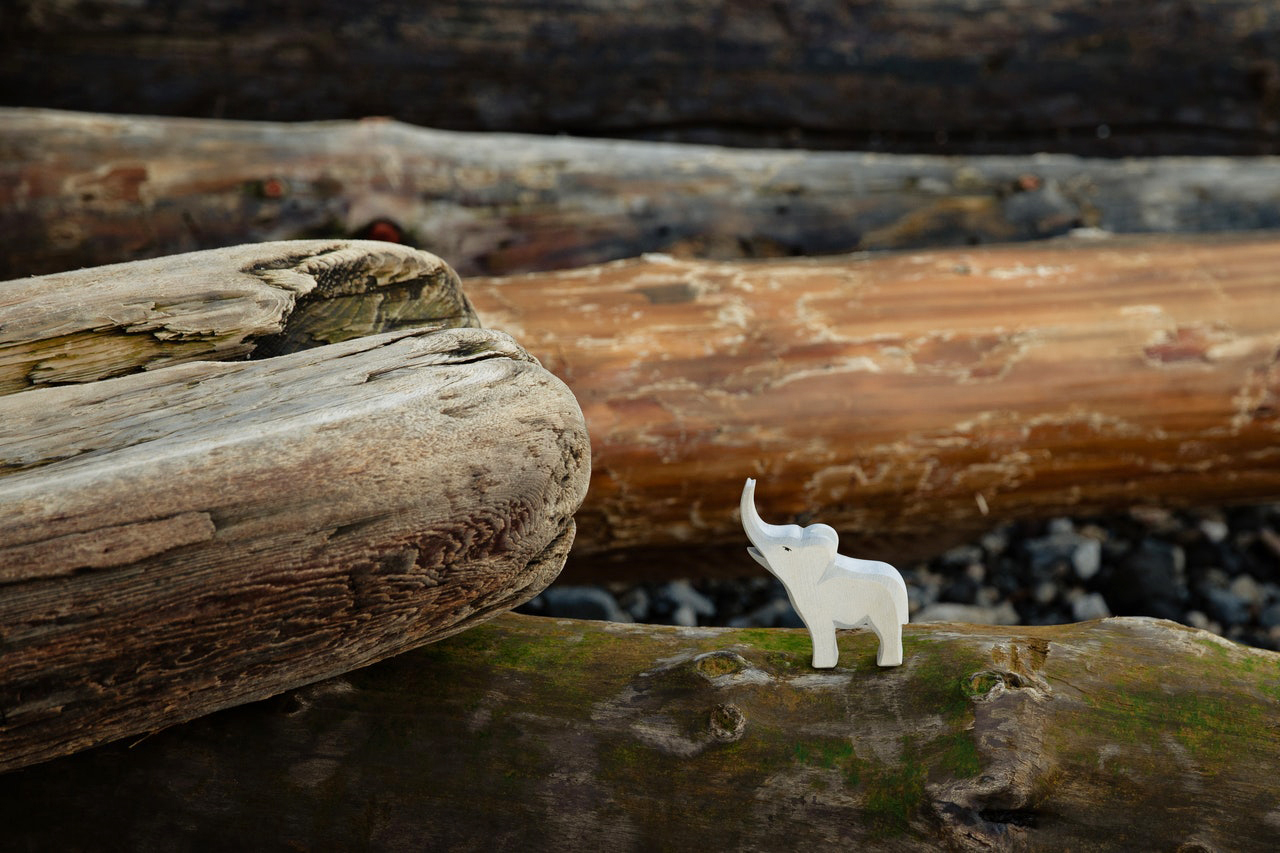
Photo: Tatiana Syrikova
Royal Salute
An elephant pair in stone
at the bottom of steps to
the temple’s open shrine
have legs raised — one each, a right and a left...
Marble eyes smoke coal,
trunks twirl lightly on the ground.
The phallus bathed in raw milk, enthroned on white cloth,
the priest lights the incense and the lamp.
Eyes glint as Ganesh is worshipped first...unbroken rice and flowers strewn at his feet.
The priest turns to Siva, sprinkles water thrice on his gleaming phallus.
The purification chant begins...
Eyes glow as more chants follow:
of a worshipper’s resolution, of invocation, of invitation..
Eyes spark as the invitation is accepted..
water received for washing feet;
curd, ghee and honey for bathing; sacred thread and clothes for dressing..
perfume, flowers, wood apple leaves, incense, lamp, sweets, drinking water, fruit, betel nut..
The priest raises the five-beaked lamp,
his oiled back ripples with the rotating flame, the pealing bells.
He lays down the lamp,
the bells stop.
The elephants turn around, gallop up the steps, raise their trunks to Siva in salute.
Their caladium ears flap with fervour.
Flowers, leaves, incense waft out of their leather flutes
in a spray of perfumed water,
sending the priest’s oiled body
crashing down the steps.
Nandi to Siva
When you beheaded Parvati’s child
created from her own body to guard her...
she raged, threatened to destroy the worlds..
You asked me to find another head for your wife’s child, Ganesha..
The war that followed was a feast.
God Indra knew I had designs on the head of his royal elephant, Airyavata.
He rained an army of arrows on me,
bounced off like prickly pods off stone.
Airyavata’s royal head was placed on the child’s dismembered body.
Since then I am stone, under my own stone column pavilion.
My powerful legs lie tucked beneath my body,
my whip-lash tail beneath my enormous rump.
My open pavilion, my gaze are now fixed on your phallus,
Unwaveringly..
When they come, mark my forehead with your three white lines, your third eye..
decorate my neck with garlands of flowers, of bells..
stroke my body with yearning hands..
they sense
I know your power of destruction
I know your power of creation
I know your power of protection.
Though made of stone,
they know I know.
Hawk’s Flight
King Bimbisara’s prison is an empty plot with scattered bush clumps bordered by a wide
low stone wall. All he wanted from his usurper son was that his prison be built below the
range of the Rajgir hills, so he could see the orange-robed Buddha walk up and down
Vulture’s peak during his monsoon retreats. For the king had been a disciple of the
Buddha and had attained sotapannahood, a degree of enlightenment in Buddhist
teachings.
low stone wall. All he wanted from his usurper son was that his prison be built below the
range of the Rajgir hills, so he could see the orange-robed Buddha walk up and down
Vulture’s peak during his monsoon retreats. For the king had been a disciple of the
Buddha and had attained sotapannahood, a degree of enlightenment in Buddhist
teachings.
As I ascend the steps that will take me to the peak, I envision the Buddha as a stair
climber. It is only when the steps become narrow and steep, flanked by huge rocks
overlaid with moss and clinging trees that I feel he walked these steps. Chimpanzees
perched on giant boulders resemble the stone — brown, grey, red.
climber. It is only when the steps become narrow and steep, flanked by huge rocks
overlaid with moss and clinging trees that I feel he walked these steps. Chimpanzees
perched on giant boulders resemble the stone — brown, grey, red.
The first cave I come across is a deep grotto created by rock outcrops, one wall a gnarled
tree. Prayer flags flutter across it in the breeze. Both Buddha’s foremost disciples,
Śāriputra and Maudgalyāyana embraced Buddhism in these hills. The King had been a
close friend of Maudgalyāyana. In prison, he had prayed to the Buddha to send his friend
to him to teach him the eight precepts. Maudgalyāyana had flown to him, swift as a hawk
and fulfilled the prisoner’s wish. I wonder which could have been Maudgalyāyana’s cave.
I am drawn to one: grey rocks face each other like two humans, a single mouth opens into
a deep interior.
tree. Prayer flags flutter across it in the breeze. Both Buddha’s foremost disciples,
Śāriputra and Maudgalyāyana embraced Buddhism in these hills. The King had been a
close friend of Maudgalyāyana. In prison, he had prayed to the Buddha to send his friend
to him to teach him the eight precepts. Maudgalyāyana had flown to him, swift as a hawk
and fulfilled the prisoner’s wish. I wonder which could have been Maudgalyāyana’s cave.
I am drawn to one: grey rocks face each other like two humans, a single mouth opens into
a deep interior.
The peak is a flat stretch built on the ruins of an old temple: craggy trees hold it up like a
cradle to the sky; the hill ranges all around brood in gentle silence. Friendly rocks stand
like camel humps at the entrance to the open shrine: a low rectangular wall, with space
for circumambulation. I enter the shrine and gaze at the Buddha’s statue. There are
colourful satin cloth pieces which serve as altar. Prayer flags flutter above. My eyes close.
cradle to the sky; the hill ranges all around brood in gentle silence. Friendly rocks stand
like camel humps at the entrance to the open shrine: a low rectangular wall, with space
for circumambulation. I enter the shrine and gaze at the Buddha’s statue. There are
colourful satin cloth pieces which serve as altar. Prayer flags flutter above. My eyes close.
mindfulness —
chimes of spring
over old rocks
Two Haiku
bird droppings on
Buddha’s stone head…
He smiles
Buddha’s gaze —
no mind
no world
More from The Byword
Comments
*Comments will be moderated




